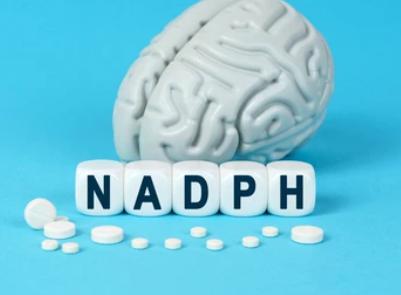(NAD+/NADH) and (NADP+/NADPH) redox pairs are cofactors and/or substrates for a variety of enzymes in the organism and play an important role in maintaining cellular redox homeostasis, biosynthesis and cellular physiological activities. As the most important reducing substance in mammalian cells, NADPH plays a key role in a variety of physiological and pathological processes. The study of intracellular NADPH metabolism has formed a new hot spot in recent years.

The importance of NADPH metabolism
NADPH provides high-energy electrons for antioxidant defense and reductive biosynthesis. Since NADP+ and NADPH cannot cross intracellular membrane structures, intracellular NADPH is compartmentalized. In the cytosol and mitochondria, there are a set of isozymes (NADK1 and NADK2) that catalyze the production of NADP(H) from NAD(H), respectively. Cytosolic NADPH is an important substrate for fatty acid and reduced glutathione (GSH) synthesis, while NADPH in the mitochondria is involved in many important biosyntheses. Whether NADPH has some other unknown biological functions remains to be further explored.
NADPH metabolic flux analysis service at Creative Proteomics
The role of NADPH in redox processes and as NOX substrate for ROS production is involved in the complex pathological processes of aging, Alzheimer's disease, Parkinson's disease, cardiovascular disease, ischemic stroke, diabetes, obesity, cancer and other diseases. Studying the mechanisms of NADPH production and regulation in different intracellular compartments, as well as the manner and outcome of NADPH action in a variety of diseases, will provide new insights into its role in human health and may lead to the discovery of novel drugs for the treatment of a variety of cardiovascular or neurodegenerative diseases.
Based on 13C or 15N metabolic flux analysis (MFA), we can help our clients perform in-depth, reliable studies of multiple metabolic pathways, including NADPH metabolism. Specifically, our service includes experimental design, labeling experiments, isotopic labeling, nucleotide metabolic flux estimation, and metabolic flux data analysis. We are committed to providing our clients with strong data support in the areas of understanding disease mechanisms and discovering drug targets.
Accepted samples
Cells, tissues, microbial organisms, culture media and fermentation broth
Instrument platform
Orbitrap LC-MS, UHPLC-QQQ-MS, and GC-Q-MS
Report delivery
- Experimental steps
- Relevant MS parameters
- Quantitative or quantitative information of the identified substances
- Mass spectral images
- Raw data
- Metabolic flux result and interpretation, including variance analysis, cluster analysis, correlation analysis, ROC analysis, network analysis, and other custom analysis
Creative Proteomics designs to expand the availability of metabolomics services to investigators in life science while simultaneously advancing the state-of-the art in metabolomics research. We can offer various 13C or 15N stable isotope labeled metabolic precursors, such as D-Glucose (U-13C6), D-Glucose (1,2-13C2), D-Glucose (1-13C), L-Glutamine (13C5), L-Glutamine (amine-15N), L-Glutamine (1-13C), and L-Glutamine (5-13C). A range of other uniformly or selectively 13C/15N/D -labeled metabolites and amino-acids are also available.
Contact us right now for more information!
Reference
- Chen, Li, et al. "NADPH production by the oxidative pentose-phosphate pathway supports folate metabolism." Nature metabolism 1.3 (2019): 404-415.